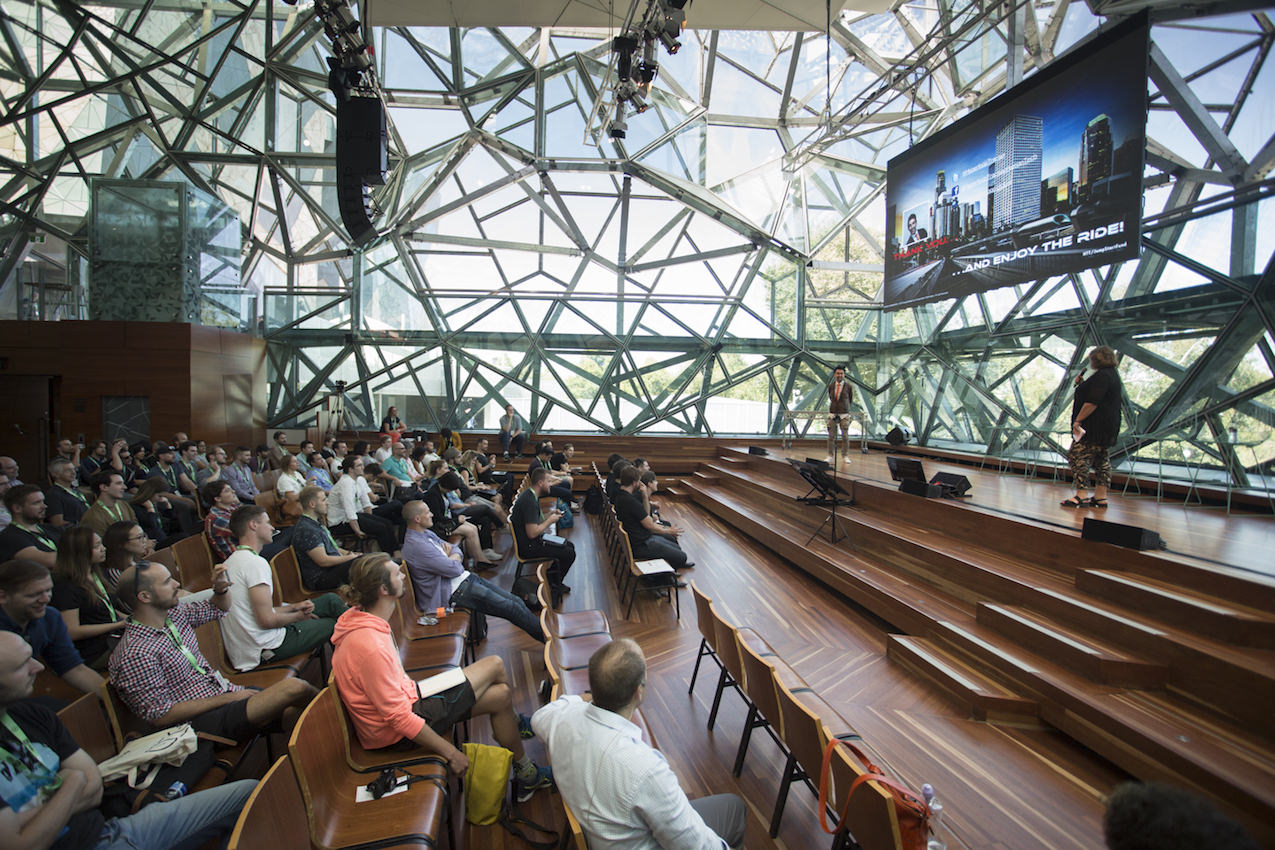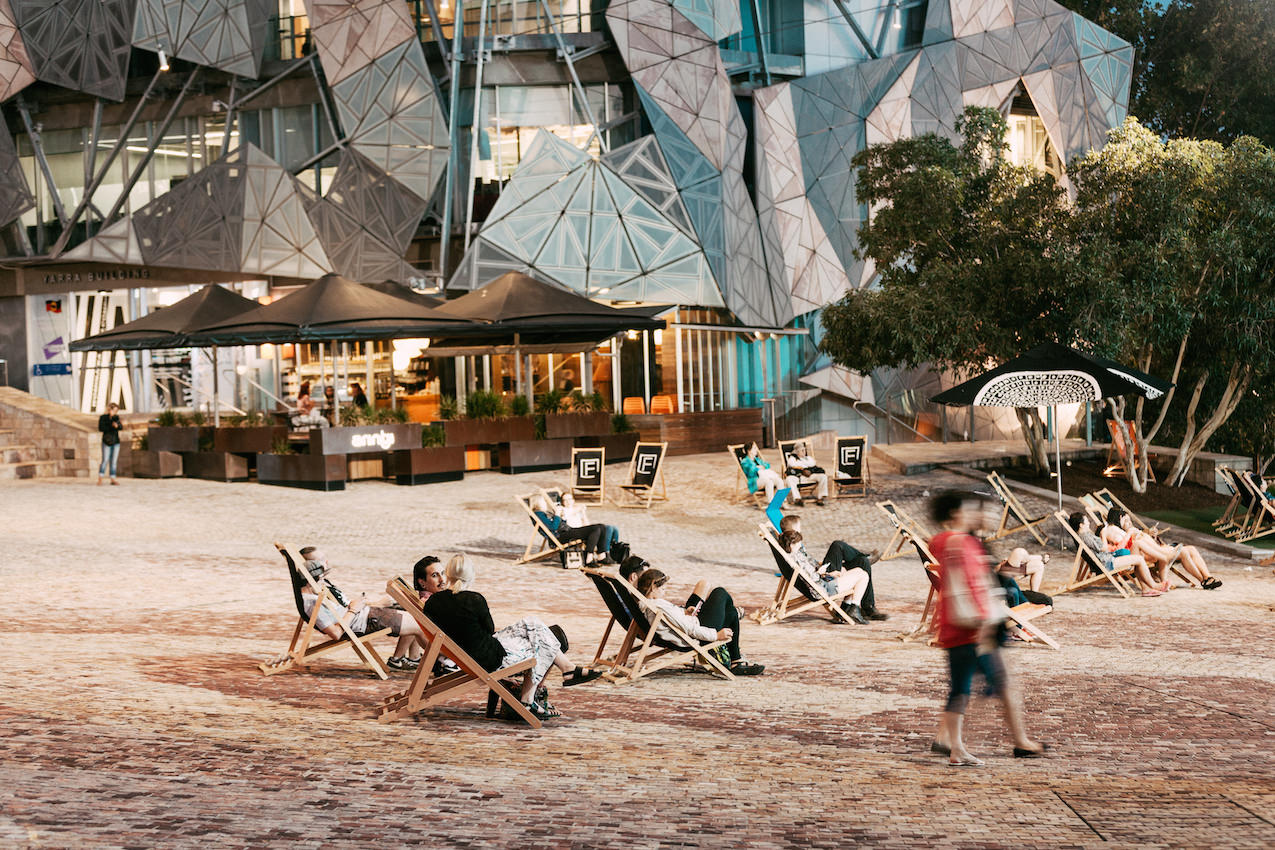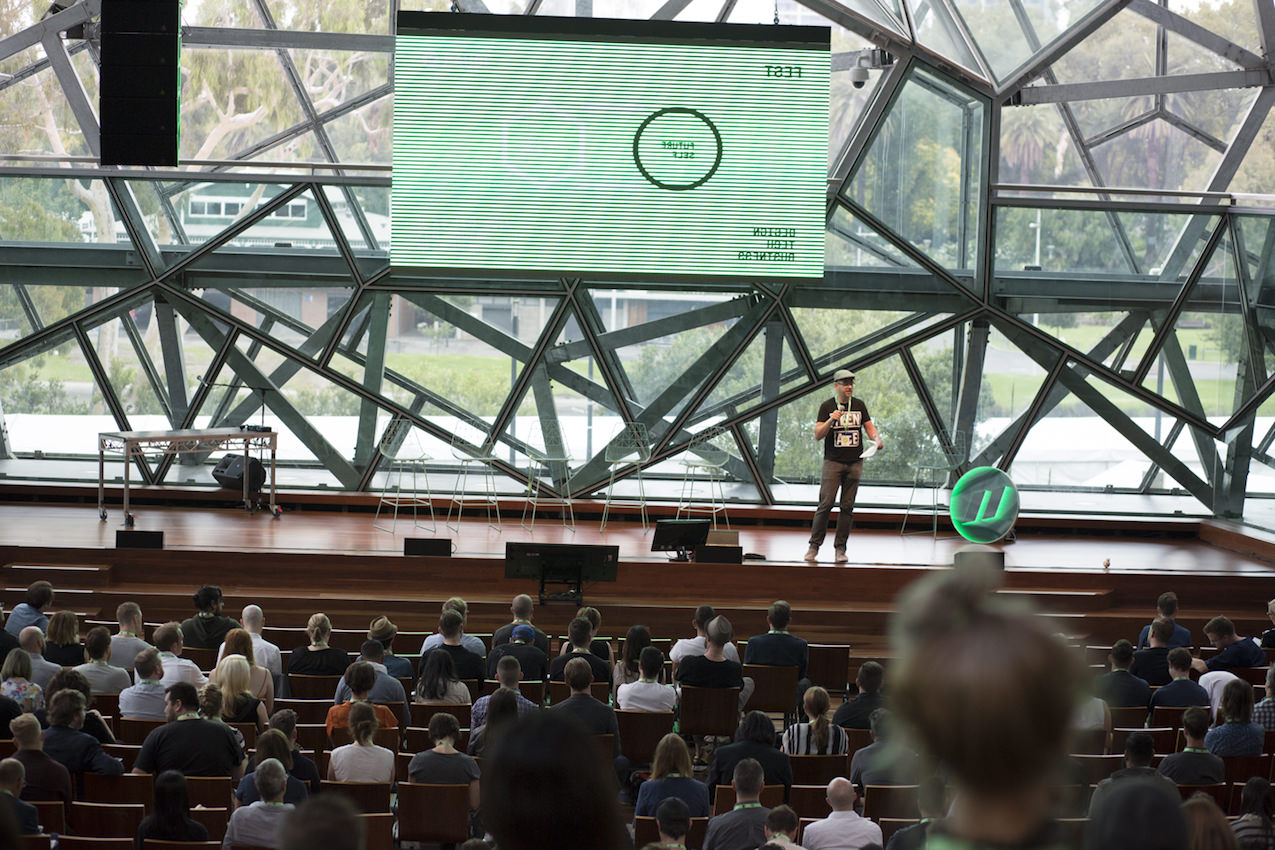Last month, From February 8—14, Melbourne’s Federation Square hosted the annual creative technology conference Pause Fest founded by George Hedon. Now in its fifth year, Pause Fest’s mission is to create a platform for innovation that unites industries in order to share ideas. The conference brought together over 2,000 creative industry leaders, startups, and entrepreneurs over a week-long schedule of events including start-up expos, virtual reality film screenings, installations, and talks.
On Tuesday, February 9, Director of Regional Arts Victoria Esther Anatolitis moderated a series of talks concerning technology’s role in shifting community engagement with public facilities and cultural institutions such as museums. The line between artist, curator, and audience has never been more fluid thanks to interactive technologies such as smartphone apps, digital museum displays, and other technologies that allow users to provide personalized contributions directly to art installations. While a broad range of topics ranging from gaming and ethics, to community identity and art for the promotion of human rights were discussed, Katrina Sedgwick and Sebastian Chan specifically focused on digital publics in the realm of art museums.

Photo by Brook James
As the CEO and Chief eXperience Officer (CXO) at the Australian Center for the Moving Image (ACMI), both Sedgwick and Chan respectively deal with the evolving nature of what audience engagement means in the 21st-century. Sedgwick said, “A museum has to be about an active sharing of ideas, a place of exchange. The relationship between curator and audience is shifting into a more dynamic, two-way conversation. Equally as we are inundated with information and provided limitless choice through our digital platforms, I believe we need curators now more than ever.” However, the role of the curator is not that of controller, but that of enabler and collaborator. Sedgwick explains that the goal is to focus on how to enrich a visitor’s experience before, during, and after their visit in order to ensure a participatory interaction.
To do so, Sedgwick outlined a few new initiatives currently underway at ACMI; namely, the newly created role of CXO, their interactive media tech facility, and their new supplemental location titled ACMI X. Their media tech room allows visitors to digitally access the museum’s collection as well as the film and sound archive, and watch, listen, share, save, and edit the material according to their own preferences. Sedgwick said, “By creating a digital public space where it is housed, we can create a participatory sharable experience that simultaneously illuminates our past and our present. We want to take it outside the room, into a virtual space that allows multiple points of access otherwise previously unimaginable.” Additionally, ACMI X will house a collaborative workspace that encourages members of the creative industries, businesses, and artists to work alongside one another in both a physical and digital space. The initiative not only enables collaboration between creatives, but also between the museum and audiences, as anyone creating a project within ACMI X has access to showcase prototypes to normal ACMI visitors.

Photo by Cristal Cachia
In what is perhaps a singularly unique role within the museum-sphere, the role of CXO filled by Chan, former Director of Digital and Emerging Media at the Cooper Hewitt Smithsonian Design Museum, which was created to develop strategies to enhance and deepen the audience experience. Chan spoke of his previous work at the Cooper Hewitt, and their innovative pen that allows visitors to create, interact, and save works of art housed within the museum. Chan said they wanted to give visitors “permission to play,” and to transform the typically highly structured and quiet space of a museum into a social experience.
In ending, Chan said, “The work is never done. The biggest shift in mindset for museums is to go from thinking of exhibits as something you put on, finish, and move onto the next one, to thinking about a holistic experience for visitors that began before they come and continue when they return.” If the rest of the art-world follows suit, museums in the not so distant future will become public spaces for personal experiences.

George Hedon, opening conference
Photo by Cristal Cachia








